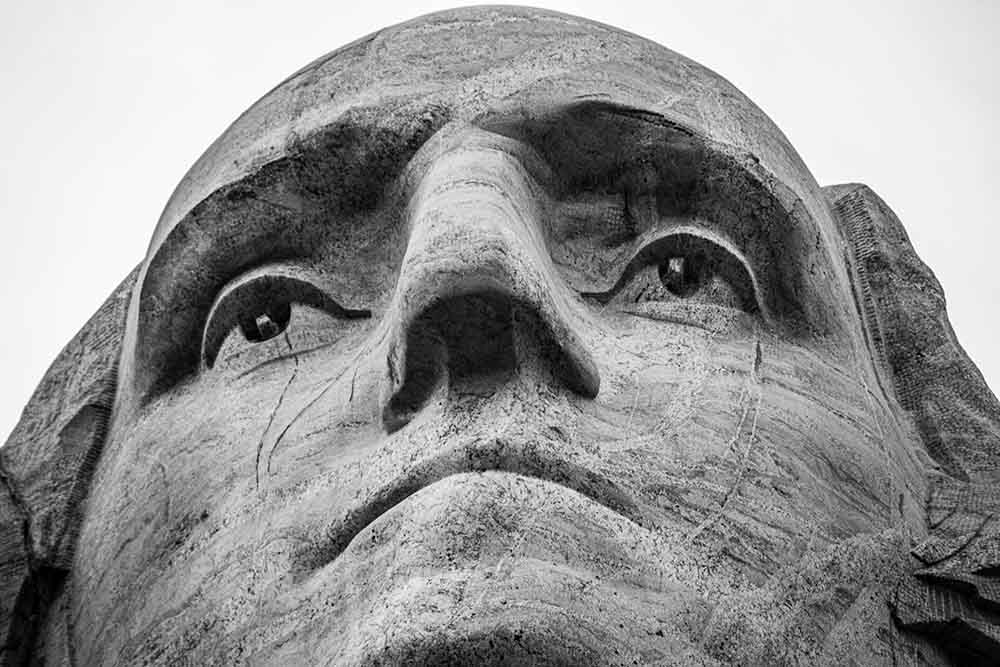George Washington. Thomas Jefferson. John A. MacDonald. These men are worthy of remembrance and acknowledgement for their contributions to the great nations of the United States and Canada. Unfortunately, as dead white males, they are also the targets of critical theory, Cultural Marxism, and political correctness. The removal of their statues in recent years, or even weeks, is great cause for concern. A revolution—an insurgency, is at hand.
Show me a toppled statue and I will show you a revolution. Recent Asian history is full of examples. The Taliban put its radical mark on Afghanistan in 2001 when it blew up two 1,700-year-old Buddha statues—including the world’s tallest at 50 metres. Two years later, America stamped its victory in Iraq by draping an American flag on the face of a large statue of Saddam Hussein in Baghdad. When a crane attached to a tank finally pulled it down, mobs rushed in to pile on top of the statue and desecrate it.
In 2014-15, the Islamic State of Iraq and the Levant (ISIL) went on a rampage of cultural destruction. They used explosives to blow up the tombs of the biblical prophets Daniel and Jonah. Almost all of the churches in Mosul were destroyed, as were ancient pagan temples at Palmyra. At the Mosul Museum, artifacts from the Assyrian Empire in the 8th Century B.C. were bulldozed, destroyed, and smashed. Much of the ancient city of Nimrud was bulldozed, including most of the excavation zone that went back to the 13th Century B.C. They also destroyed most of the art and sculptures in Hatra.
Why did ISIL do this? The Wikipedia entry on ISIL’s reign of destruction sums it up best: “Destroying historic ruins also allows ISIL to wipe the slate clean and to start afresh, leaving no traces of any previous culture or civilization, while also providing an ideal platform for the group to establish its own identity and leave its mark on history.”
They might have learned this from Mao Zedong who did the same thing in China. His cultural revolution burned up genealogical records that went back millennia. The one whose image and record remained was Chairman Mao, father of the revolution.
Vladmir Lenin once had 5,500 statues in Ukraine. In 2014, Lenin’s statue in Kiev was taken down by protesters in the Orange revolution. In 2015, the new government made those statues illegal as a statement against Russian domination.
While monuments in Iraq, Syria, and Ukraine were destroyed, rhetorical attacks heated up against Confederate flags and statues. Harvard historian Annette Gordon-Reed, an African-American, is no fan of Confederate monuments. Yet, even she opposes the removal of statues of Washington or Jefferson, simply because they owned slaves. “There is an important difference between helping to create the United States and trying to destroy it,” she says. Even so, in June of 2020, protestors pulled down a Thomas Jefferson statue at the Portland high school named for him. They also took down the city’s statue of George Washington.
Canada’s first prime minister, John A. MacDonald, did not own slaves, but he did set up Indian residential schools and hanged Metis leader Louis Riel for treason. Victoria Mayor Lisa Helps removed MacDonald’s statue at her own city hall in 2018 in the name of “reconciliation.” Protestors at the event said, “We’re here to say there’s no honour in cultural genocide and it’s time for the statue to go.” That was pretty rich irony, given that the MacDonald statue itself was a cultural monument and Victoria’s democracy only existed because of MacDonald’s efforts during Queen Victoria’s reign.
Two months later, the prime minister took MacDonald’s face off of the $10 bill. But, he was the same man who told Canadians they had no “core identity” in 2016.
Hindsight is not always 20-20, but that’s the year our historians live in. Historians, citizens, and observers also look back through the lens of their times, complete with its own biases. Tommy Douglas, Saskatchewan Premier, father of socialized medicine, and first leader of the New Democratic Party was once heralded by CBC as the “Greatest Canadian.” Yet, he also supported eugenics at one point, as did Nellie McClung—one of five leaders who helped get Canadian women the right to vote.
Our history-makers have blemishes because they are as human as those who judge them. The story of our flawed founders and these other men and women of impact is also our story. Whether the statue removers, defacers, and destroyers know it or not, they are vandals against western culture itself. They should think again because freedom is fragile. The revolution that tears down the monuments of western history clears the path to an even darker future.
Lee Harding is a research associate with the Frontier Centre for Public Policy.
Photo by Jon Sailer on Unsplash



